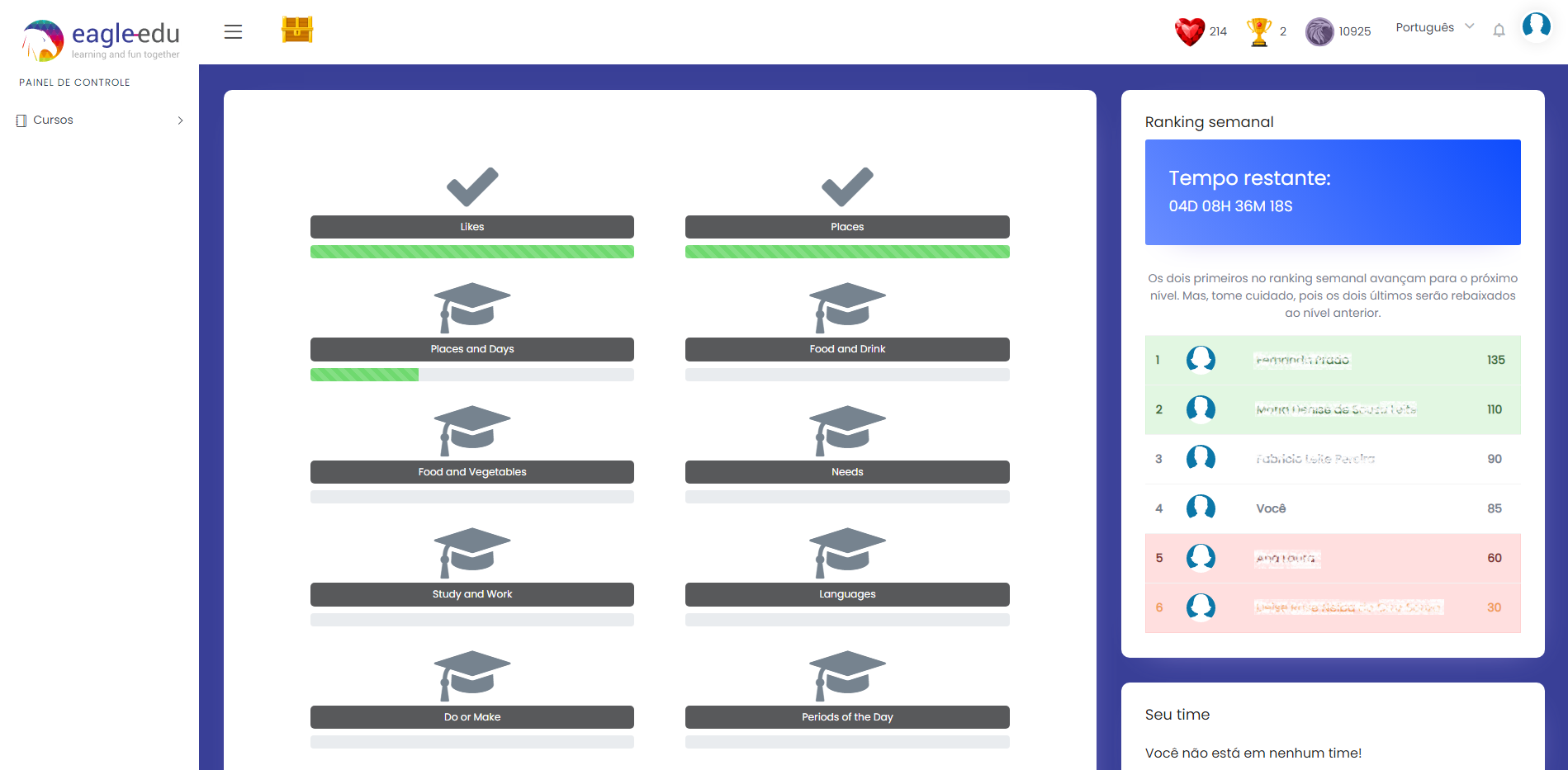Eagle-edu, in essence, consists of three main pages (for students): Progress, where students can track their progress and evolution in the system; Learning, where students can access educational activities, and Profile, where students can access their general information. The main pages have a sub-page called Store, where students can buy virtual goods and another sub-page called Friends, where students can see their colleagues and follow them.
The system has three types of tasks (to compose a mission) on the Learn page
- Simple questions with different answer options;
- Simple sentences with a blank space to complete;
- Presentation of options for students to choose pairs.
Missions are composed of different tasks. The number of tasks and missions are defined by the teacher/instructor. The gamification design of the system consists of 21 gamification elements and is organized in five dimensions (Performance/measurement, Ecological, Social, Personal, and Fictional). On the Gamification page, we have prepared a post about each of the dimensions and about each gamification element used in the system.

The system can be personalized in different ways by the teacher/instructor. One way is to enable or disable each of the gamification elements individually, and another way is to enable or disable groups of gamification elements together, according to the five dimensions. In both cases, the teacher/instructor chooses what to enable or disable. On the Personalization page, we have prepared a post on the possibilities for personalizing the system.
All details of Eagle-edu are based on scientific studies, to ensure that students have a motivating and engaging experience in the system, as well as an excellent learning experience.
The gamification design of the system was based on the study conducted by researchers Armando M. Toda, Ana CT Klock, Wilk Oliveira, Paula T. Palomino, Luiz Rodrigues, Lei Shi, Ig Bittencourt, Isabela Gasparini, Seiji Isotani & Alexandra I Cristea, in the article entitled Analyzing gamification elements in educational environments using an existing Gamification taxonomy , where the authors defined 21 gamification elements organized in five dimensions. Besides, several other aspects of the system design are constantly studied and evaluated by several international researchers in scientific studies, seeking to constantly improve the quality of the system.
In the Posts page, you can follow several articles based on scientific studies conducted on our platform.
